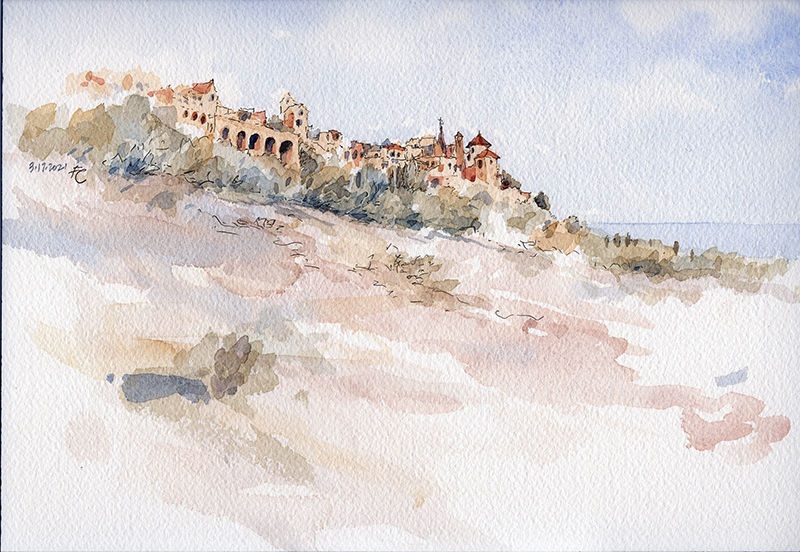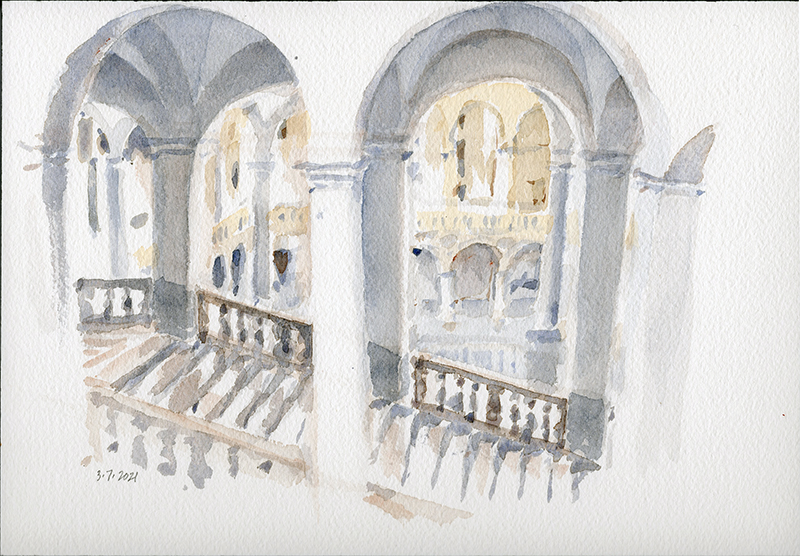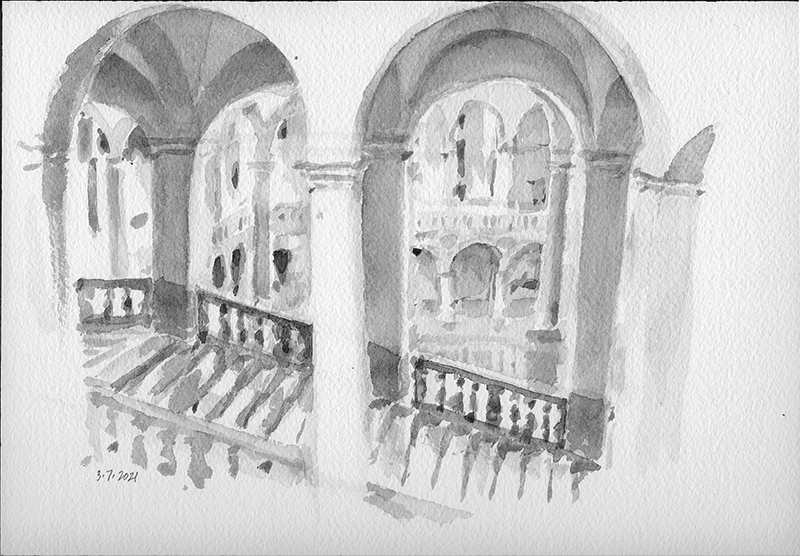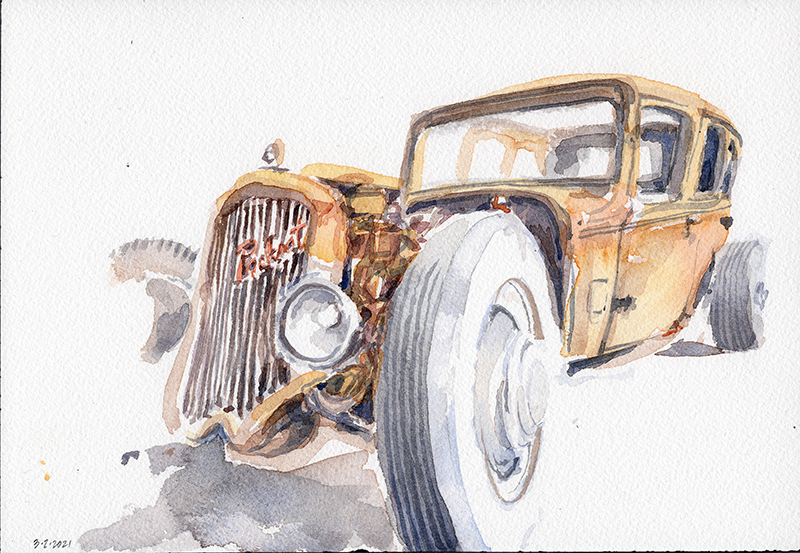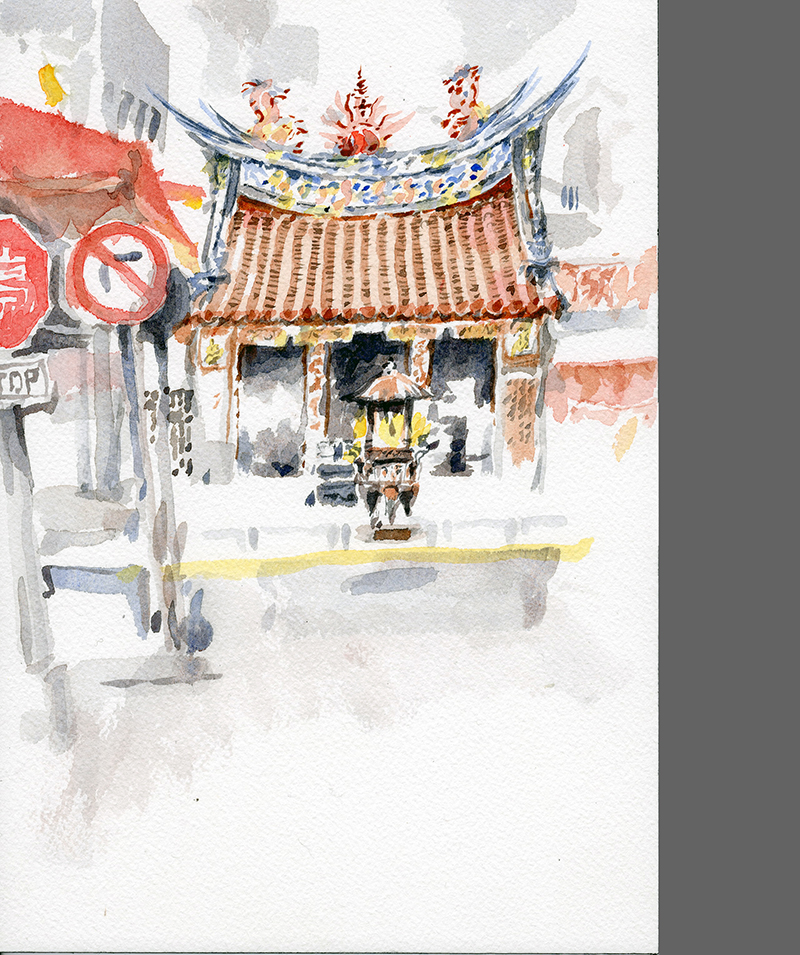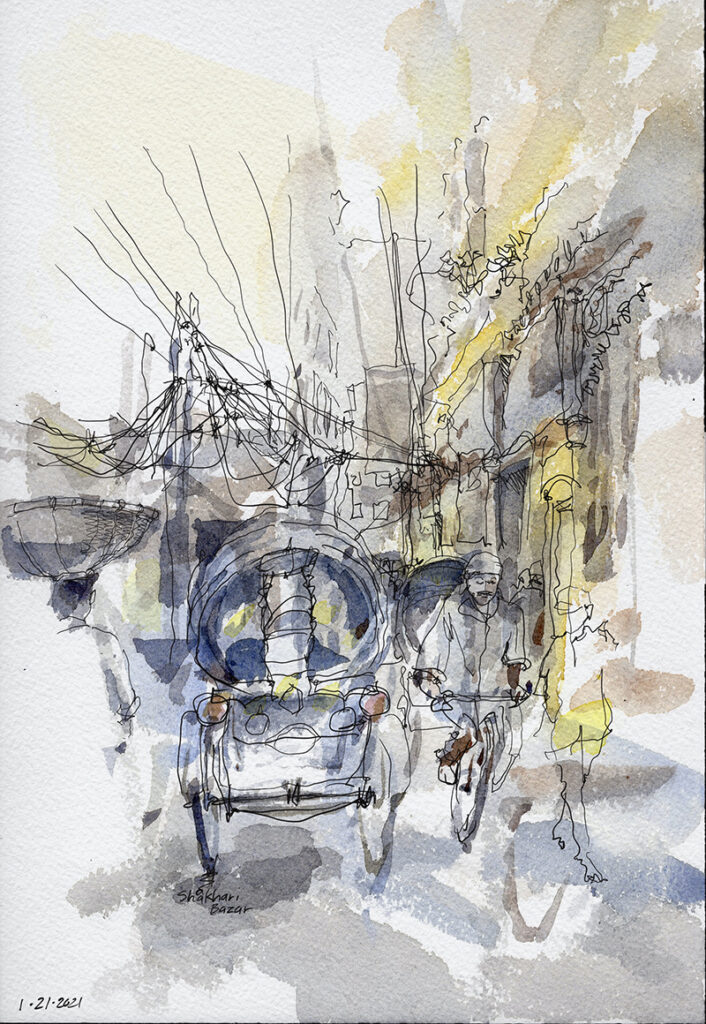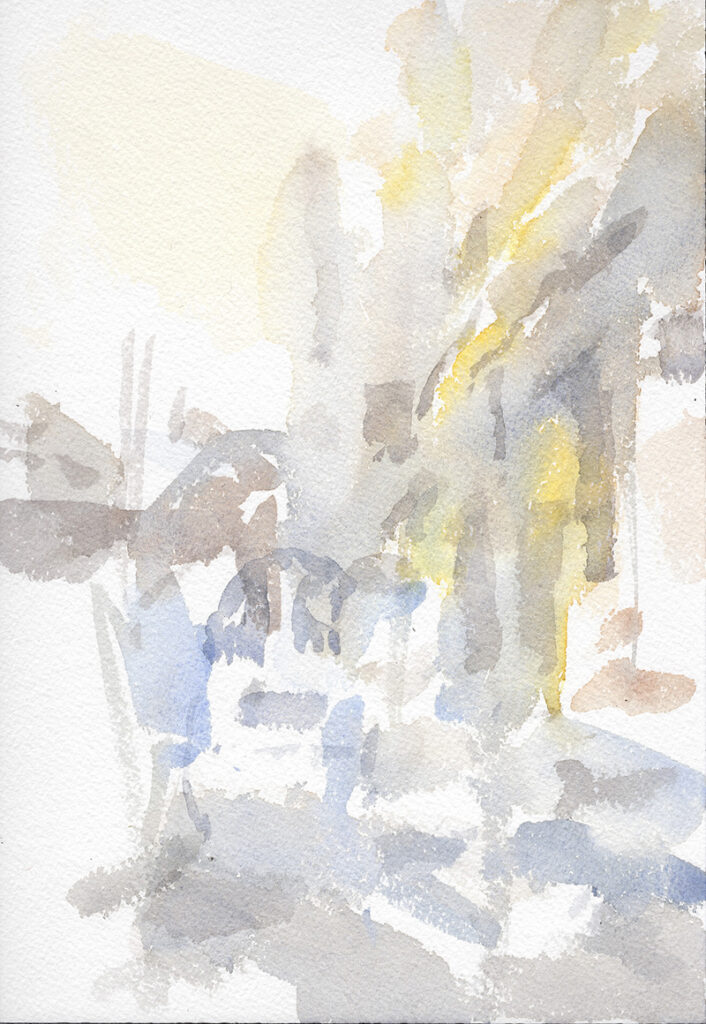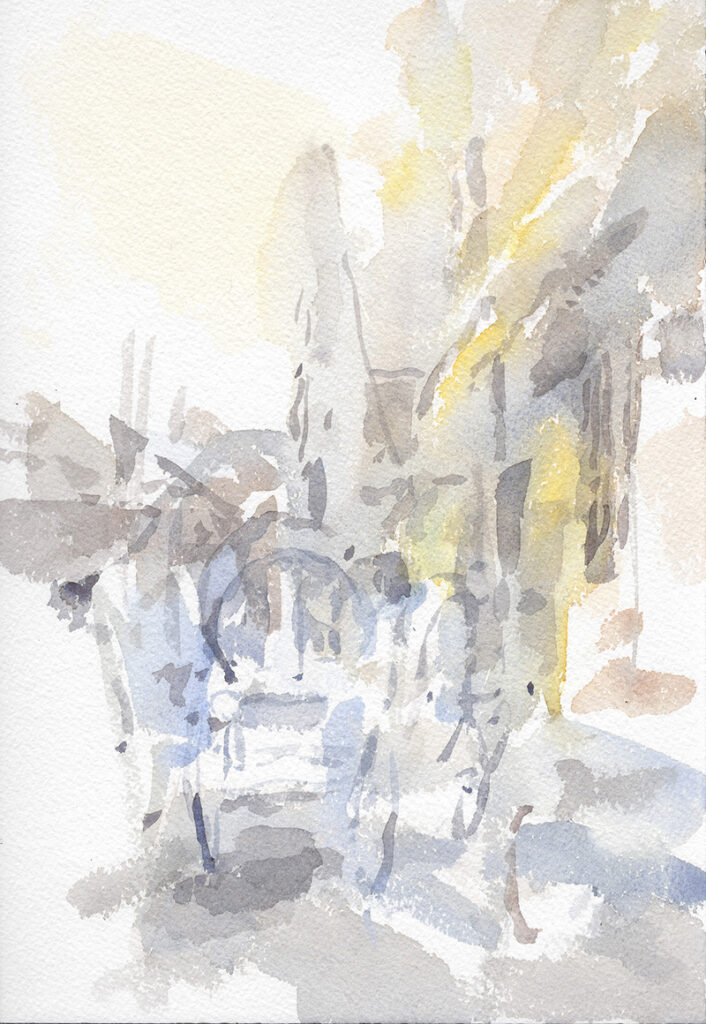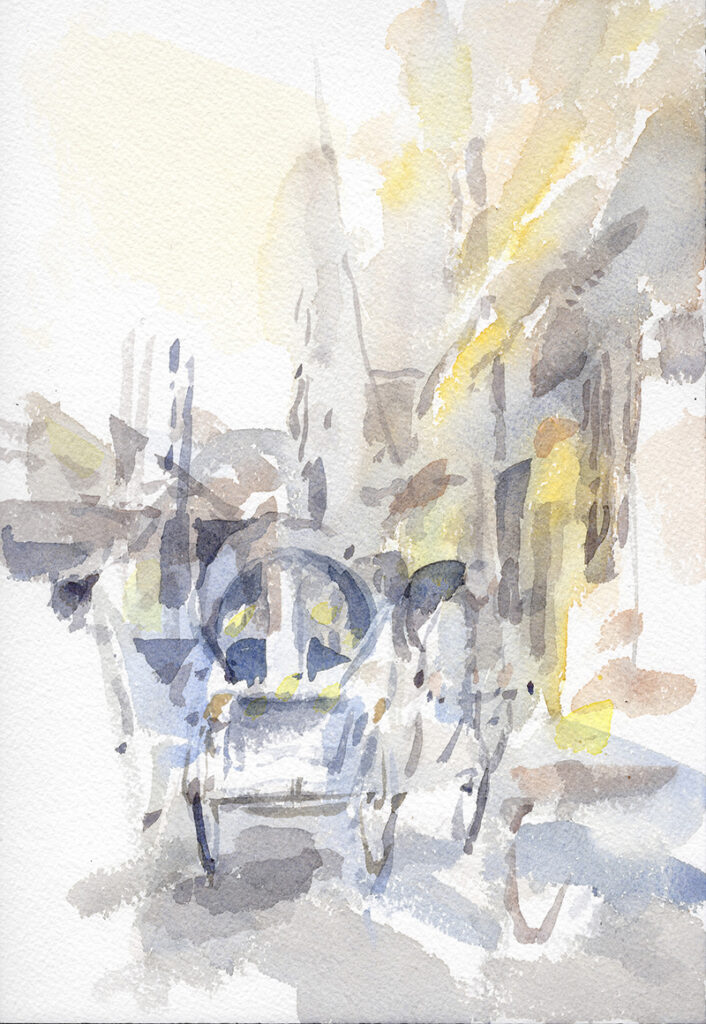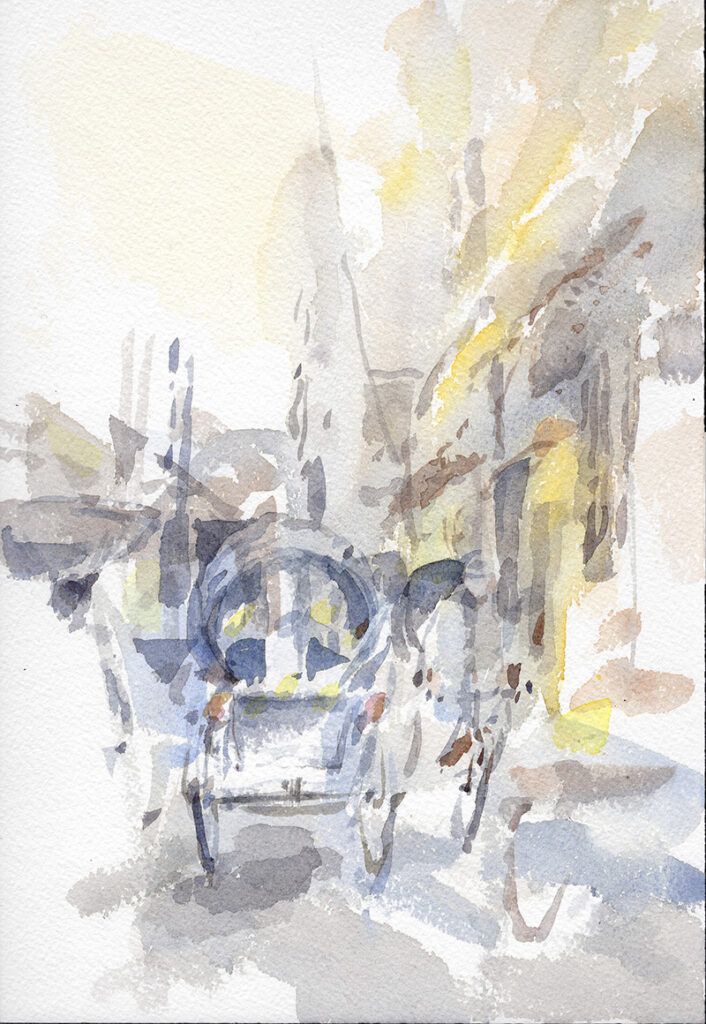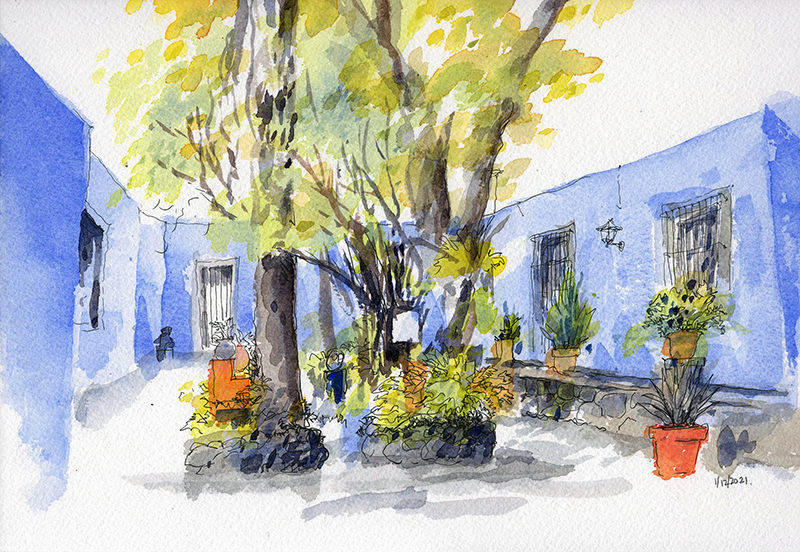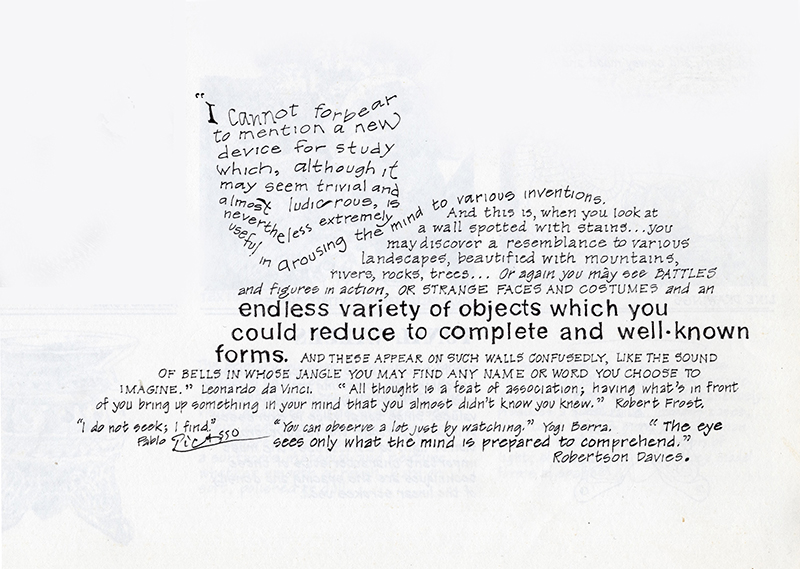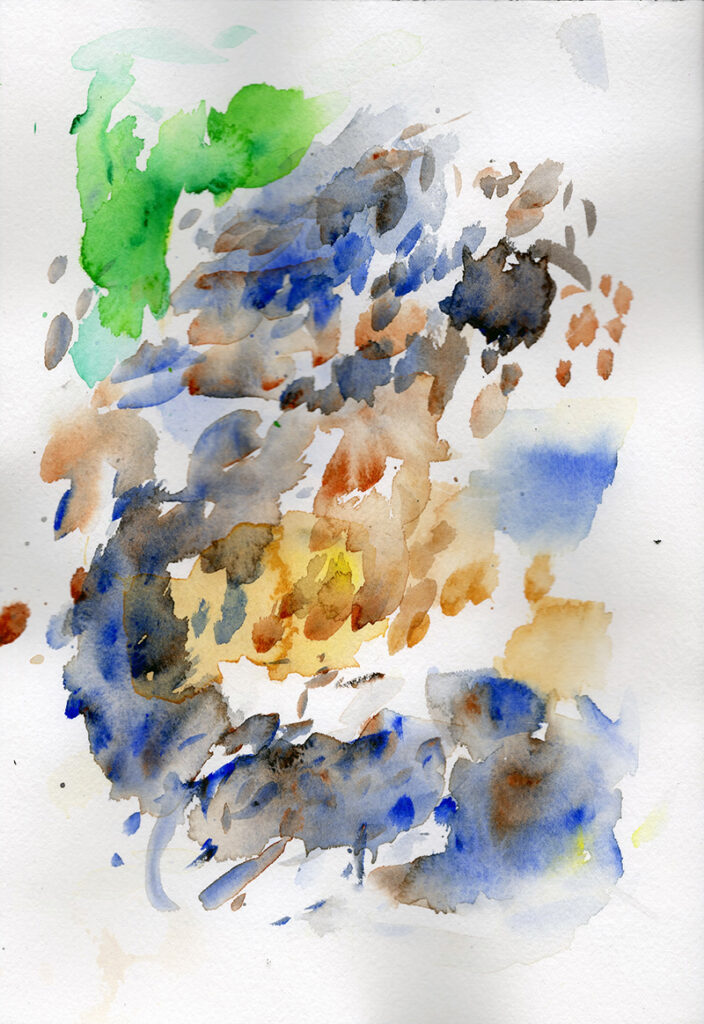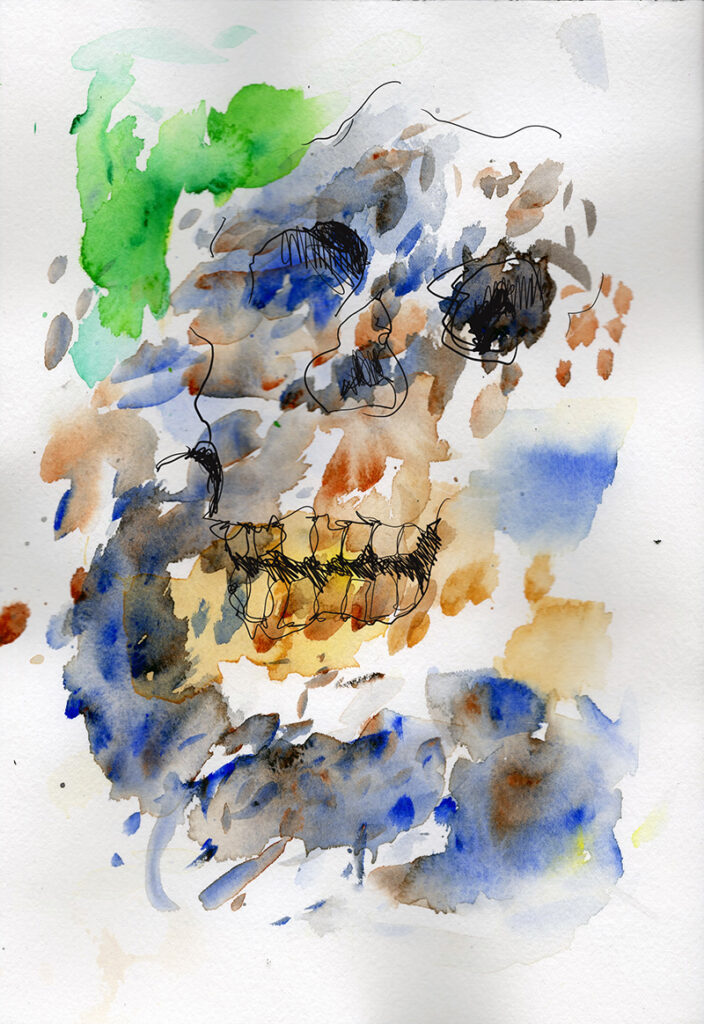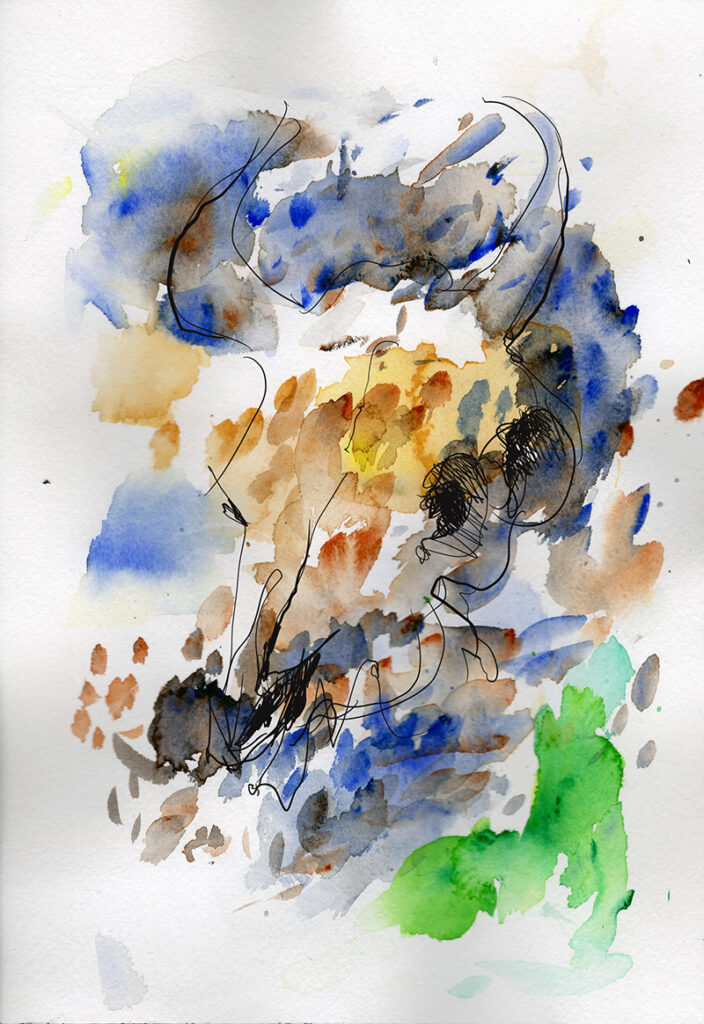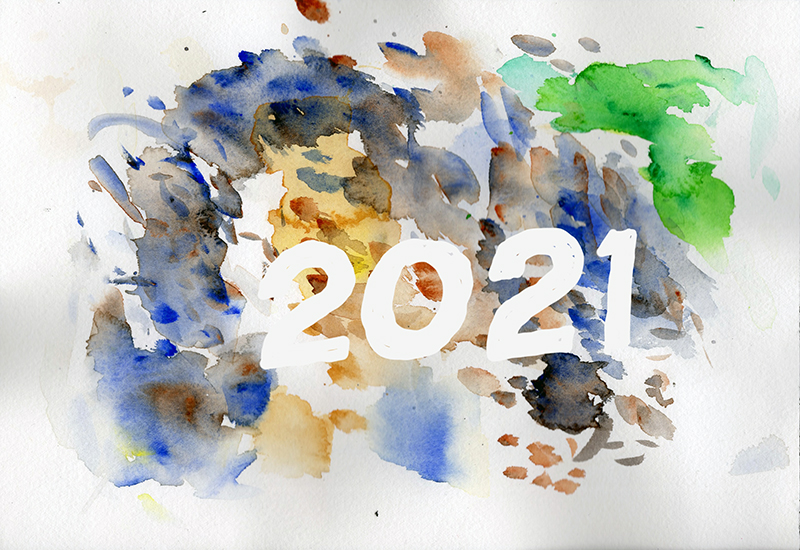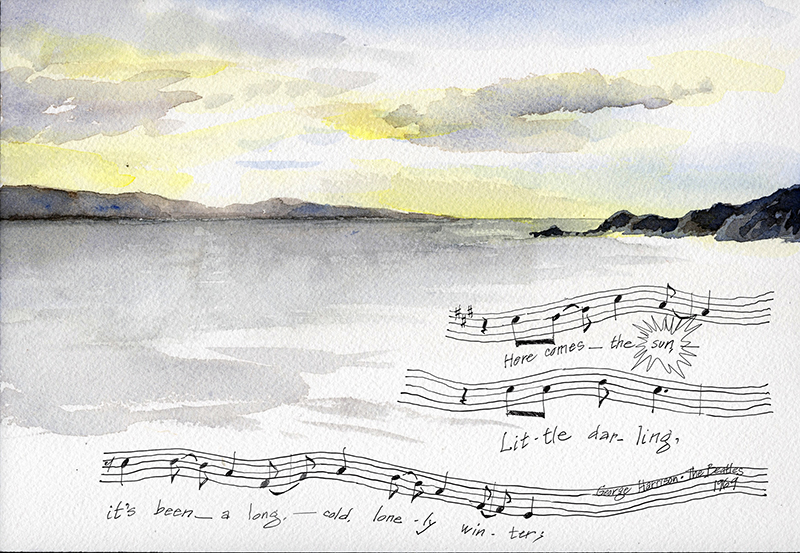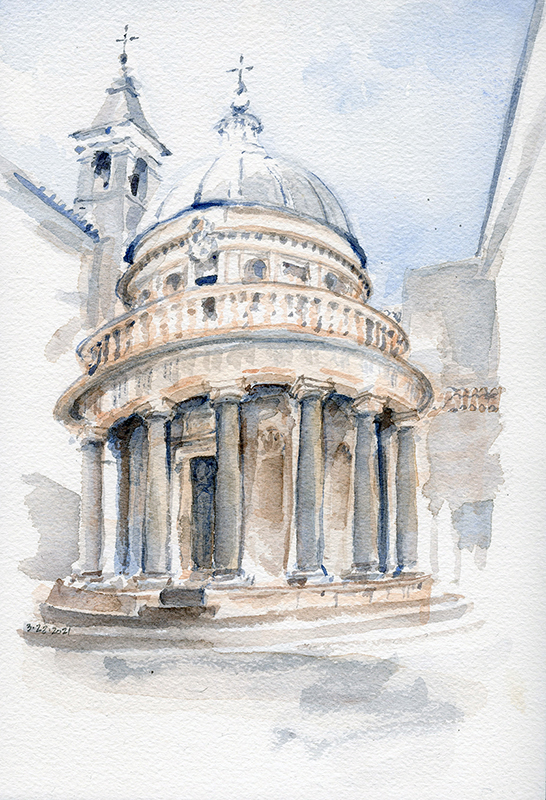
The Tempietto is a small, elegant temple situated in an outer cloister of San Pietro in Montorio, reportedly the site of St. Peter’s crucifixion, on the eastern slope of Gianicolo Hill in Rome. King Ferdinand commissioned Donato Bramante to design the martyrium in the early 16th century. It is basically a cylindrical form ringed by a series of Tuscan columns and topped by a hemispherical concrete dome. This and other examples of western classical and renaissance architecture are difficult to draw well due to the genre’s precise attention to proportion and scale. It is relatively easy to distort their forms, as in this case, where the vertical axis tilts slightly and the cylindrical from droops downward and to the left.

